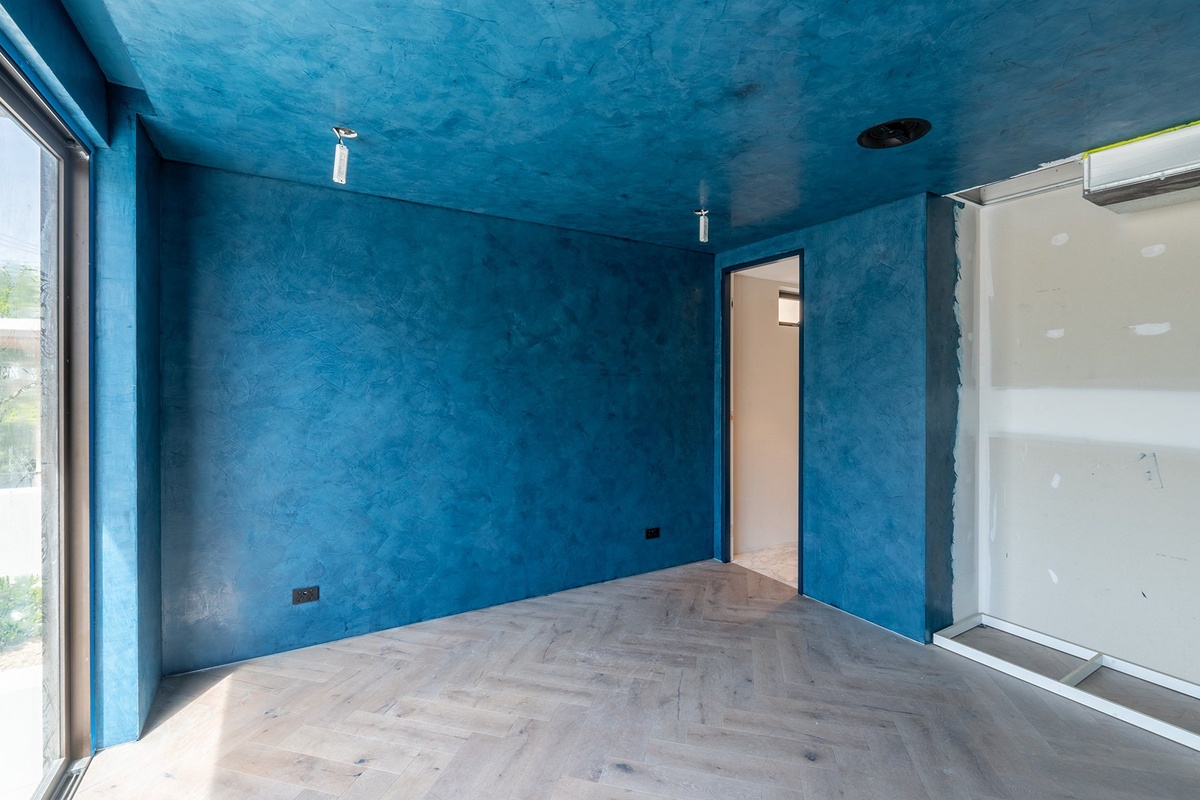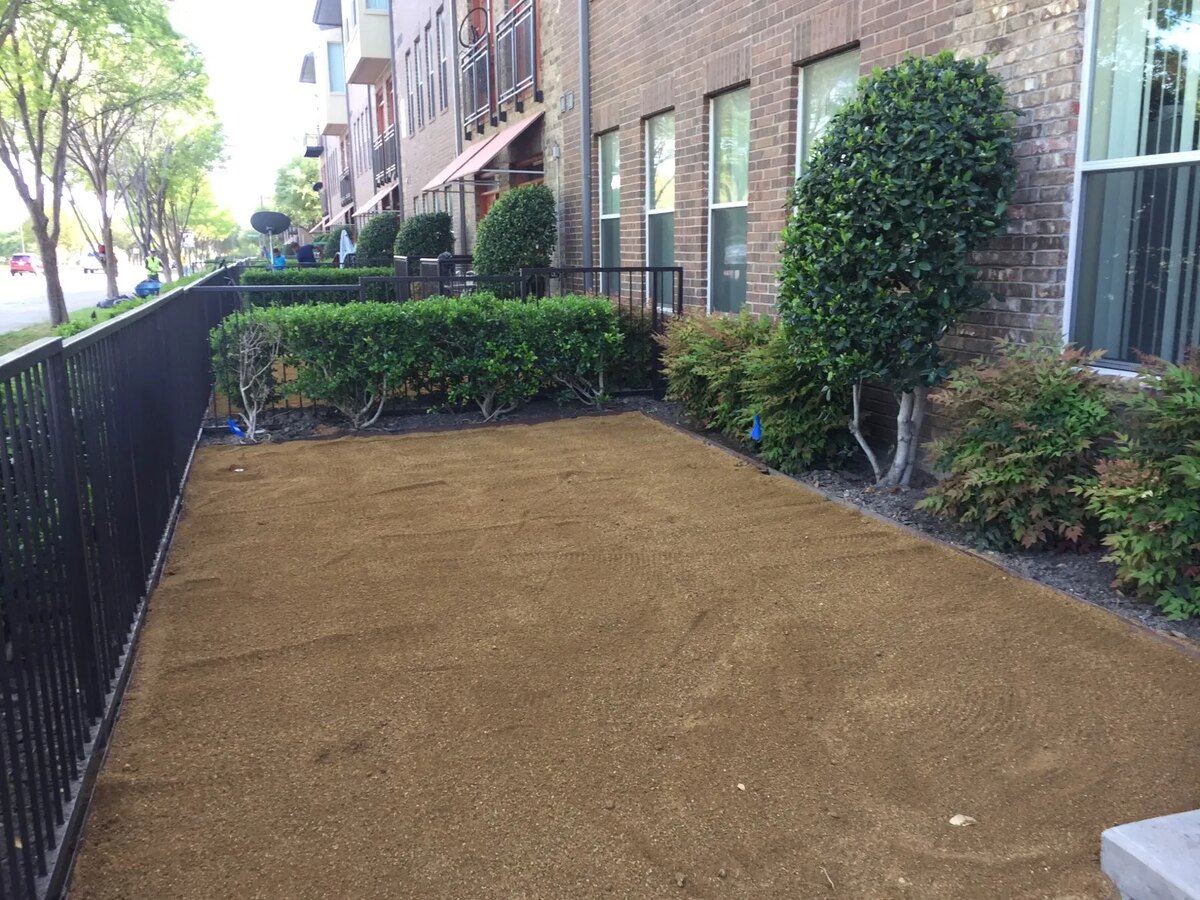Home>Construction & Tools>Building Materials>What Is Stucco Base Coat


Building Materials
What Is Stucco Base Coat
Modified: February 18, 2024
Learn about the importance of stucco base coat in building construction. Find out how this essential building material contributes to the durability and strength of stucco finishes.
(Many of the links in this article redirect to a specific reviewed product. Your purchase of these products through affiliate links helps to generate commission for Storables.com, at no extra cost. Learn more)
**
Introduction
**
Stucco, a time-honored building material, has been adorning structures for centuries. Its durability, versatility, and timeless aesthetic appeal have made it a sought-after choice for both interior and exterior surfaces. When discussing stucco, one essential component that plays a pivotal role in its application and performance is the stucco base coat. This foundational layer is crucial for ensuring the longevity and structural integrity of stucco finishes. In this article, we will delve into the intricacies of stucco base coats, exploring their composition, application, and significance in the realm of construction and design. Whether you are a seasoned contractor, a DIY enthusiast, or simply an inquisitive individual with an interest in the world of building materials, this comprehensive guide will provide valuable insights into the world of stucco base coats.
**
Key Takeaways:
- Stucco base coat is like the superhero of stucco, protecting buildings from cracks, moisture, and looking awesome. It’s the strong foundation that keeps everything together and looking great!
- Stucco base coat is like the glue that holds everything in place, making sure the stucco sticks, stays strong, and looks smooth. It’s like the secret ingredient for a super cool building!
Read more: What Is A Brown Coat Stucco
Definition of Stucco Base Coat
**
Before delving into the specifics of stucco base coats, it is essential to grasp the fundamental definition of this crucial component. In the realm of stucco application, the base coat serves as the initial layer that is applied to the substrate before the subsequent layers of stucco are added. This foundational layer is responsible for providing a stable and resilient base for the rest of the stucco system. It is typically composed of a mixture of cement, sand, and other proprietary additives that enhance adhesion, flexibility, and strength.
The stucco base coat, also known as the scratch coat, not only acts as a bonding agent between the substrate and the finish coat but also serves as a protective barrier, shielding the underlying structure from moisture infiltration and physical damage. Furthermore, the base coat plays a crucial role in accommodating the expansion and contraction of the building materials, thereby mitigating the risk of cracks and structural compromise.
Understanding the role and characteristics of the stucco base coat is imperative for ensuring the successful application and long-term performance of stucco finishes. It sets the stage for a resilient and visually appealing exterior that can withstand the test of time and environmental factors.
**
Purpose of Stucco Base Coat
**
The stucco base coat serves a multifaceted purpose, each contributing to the overall functionality and longevity of the stucco system. One of its primary objectives is to establish a secure bond with the substrate, whether it be masonry, wood, or metal lath. This bond is essential for ensuring the structural integrity of the stucco finish and preventing delamination or detachment over time.
Moreover, the base coat acts as a protective barrier, safeguarding the underlying structure from moisture intrusion. By repelling water and moisture, it helps prevent the development of mold, mildew, and deterioration within the building envelope. This moisture-resistant characteristic is particularly crucial in regions prone to inclement weather or high humidity.
Another vital purpose of the stucco base coat is to accommodate the natural movement and settling of the building. As structures expand and contract due to temperature variations and settling, the base coat’s flexibility and adhesion properties allow it to adapt without compromising the integrity of the stucco system. This flexibility helps minimize the risk of cracking and ensures that the stucco remains visually seamless and structurally sound.
Furthermore, the base coat provides a level and uniform surface for the application of subsequent layers, such as the brown coat and finish coat. This ensures that the final stucco finish exhibits a consistent texture and appearance, enhancing its aesthetic appeal.
Overall, the purpose of the stucco base coat can be summarized as follows: to establish a strong bond with the substrate, protect against moisture infiltration, accommodate structural movement, and provide a smooth and stable foundation for the application of additional stucco layers.
**
When applying stucco base coat, make sure to properly prepare the surface by cleaning and dampening it. Use the right mix of Portland cement, sand, and water for a strong and durable base coat.
Ingredients and Composition of Stucco Base Coat
**
The composition of stucco base coat is a carefully calibrated blend of essential ingredients that collectively contribute to its strength, adhesion, and resilience. Typically, the base coat consists of three primary components: cement, sand, and water. These foundational ingredients form the basis of the base coat’s composition, with additional proprietary additives often included to enhance specific properties.
Cement, a binding agent, serves as the backbone of the base coat, providing structural integrity and adhesion to the substrate. Portland cement, widely utilized in stucco applications, is known for its durability and compatibility with various aggregates and additives. The ratio of cement to other components significantly influences the base coat’s strength and workability.
Sand, specifically graded and free of impurities, is another crucial constituent of the base coat. The selection of sand with the appropriate particle size and texture is pivotal in achieving the desired consistency and finish. The sand not only contributes to the base coat’s bulk but also influences its workability, texture, and resistance to cracking.
Water acts as the medium for activating the cement and facilitating the hydration process, allowing the base coat to cure and attain its structural integrity. The proper proportion of water is essential for achieving the desired consistency and workability without compromising the strength and durability of the base coat.
In addition to the fundamental components, various additives may be incorporated to enhance specific properties of the base coat. These additives may include fibers for improved crack resistance, plasticizers for enhanced workability, and bonding agents for superior adhesion to the substrate. Each additive is carefully selected to address particular performance requirements and environmental factors.
The meticulous combination of cement, sand, water, and specialized additives results in a stucco base coat with the ideal balance of strength, flexibility, adhesion, and moisture resistance. This carefully engineered composition ensures that the base coat effectively fulfills its role as the foundational layer of the stucco system, contributing to the overall performance and longevity of the exterior finish.
**
Application of Stucco Base Coat
**
The application of the stucco base coat is a meticulous process that demands precision, expertise, and adherence to established best practices. Before the base coat application commences, the substrate must be thoroughly prepared to ensure optimal adhesion and long-term performance. This preparation typically involves cleaning the substrate, addressing any structural irregularities, and applying a bonding agent or primer to promote adhesion.
Once the substrate is primed and ready, the stucco base coat mixture is prepared according to the specified proportions and consistency requirements. The prepared base coat is then applied to the substrate in a uniform thickness, typically ranging from 3/8 inch to 1/2 inch, using a trowel or sprayer. The application process involves strategically covering the entire surface with the base coat, ensuring that it adheres securely and forms a smooth, level foundation for the subsequent stucco layers.
During the application, it is crucial to incorporate control joints or expansion joints as needed to accommodate the natural movement of the structure and minimize the risk of cracking. These joints are strategically placed to create designated points of flexibility within the stucco system, allowing for controlled expansion and contraction without compromising the overall integrity of the finish.
Following the application of the stucco base coat, it undergoes a curing process to attain its optimal strength and resilience. This curing period, which typically involves maintaining a consistent level of moisture and temperature, is essential for allowing the base coat to solidify and bond effectively with the substrate.
Once the base coat has cured, the subsequent layers of stucco, including the brown coat and finish coat, can be applied to complete the stucco system. The base coat serves as the critical foundation that supports and anchors these additional layers, ensuring a cohesive and durable stucco finish.
Throughout the application process, attention to detail, proper curing, and adherence to industry standards are paramount to achieving a high-quality stucco base coat that forms the cornerstone of a resilient and visually appealing exterior finish.
**
Read more: What Is A Seed Coat
Importance of Stucco Base Coat in Construction
**
The stucco base coat plays a pivotal role in the construction industry, offering a multitude of benefits that contribute to the durability, sustainability, and aesthetic appeal of architectural structures. Its importance extends beyond serving as a foundational layer, encompassing critical functions that significantly impact the performance and longevity of stucco finishes.
One of the primary aspects underscoring the importance of the stucco base coat is its role in providing structural stability and resilience to the overall stucco system. By establishing a secure bond with the substrate and accommodating structural movement, the base coat mitigates the risk of cracks, delamination, and premature deterioration. This structural integrity is essential for safeguarding the building envelope and ensuring the long-term viability of the exterior finish.
Moreover, the base coat acts as a protective barrier, shielding the underlying structure from moisture infiltration, environmental elements, and physical wear. Its moisture-resistant properties help prevent water damage, mold growth, and degradation within the building envelope, thereby contributing to the sustainability and longevity of the construction.
From an aesthetic standpoint, the stucco base coat sets the stage for a visually seamless and uniform finish. Its smooth and level foundation provides the canvas for the application of subsequent stucco layers, ensuring a consistent texture and appearance across the entire surface. This visual cohesiveness enhances the architectural appeal of the structure and contributes to its overall curb appeal.
Furthermore, the stucco base coat’s ability to accommodate the natural movement and settling of the building is instrumental in maintaining the structural integrity and visual continuity of the stucco finish. By flexing and adapting to the structural dynamics, the base coat minimizes the risk of unsightly cracks and ensures that the stucco remains visually flawless and durable over time.
Overall, the importance of the stucco base coat in construction lies in its multifaceted contributions to structural stability, moisture resistance, aesthetic consistency, and long-term performance. Its meticulous application and engineered composition make it an indispensable component in the realm of architectural design and construction, underscoring its significance in creating enduring and visually captivating built environments.
Frequently Asked Questions about What Is Stucco Base Coat
Was this page helpful?
At Storables.com, we guarantee accurate and reliable information. Our content, validated by Expert Board Contributors, is crafted following stringent Editorial Policies. We're committed to providing you with well-researched, expert-backed insights for all your informational needs.















0 thoughts on “What Is Stucco Base Coat”